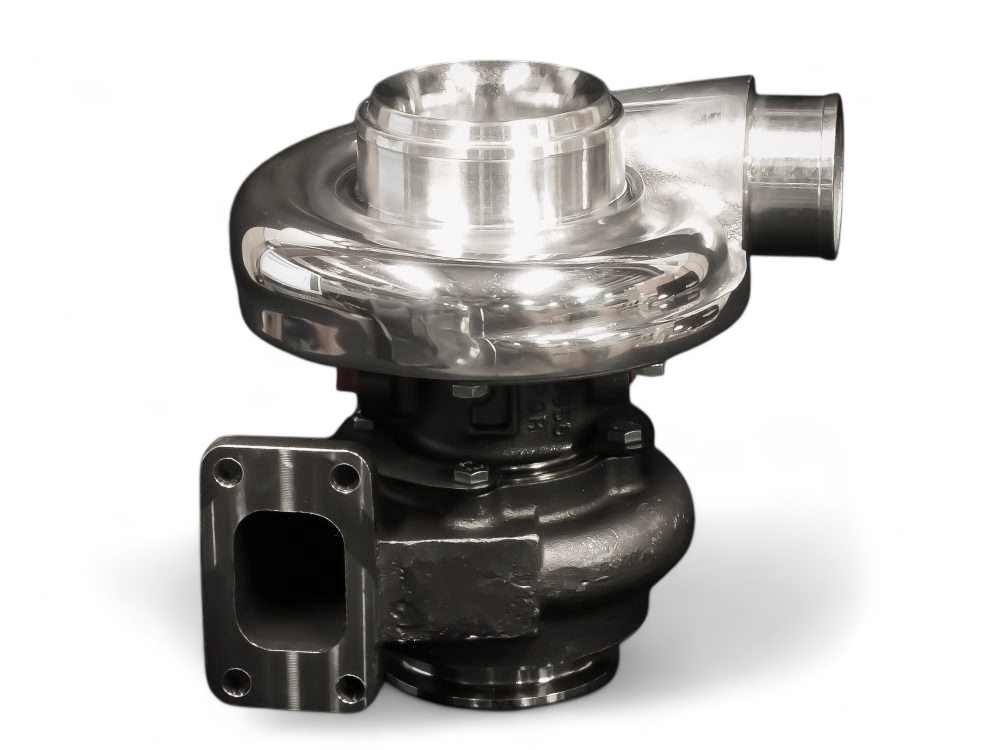
The Ultimate Guide to Bullseye Power Turbo Oil Feed Requirements
If you’re running a Bullseye turbocharger on your build, following our oil feed requirements is essential for maximum reliability and performance. This guide focuses exclusively on best practices and specifications tailored to Bullseye—including line sizing, materials, fittings, restrictors, and installation tips—so you get the most performance from your investment.
Why Proper Oil Feed Matters for Bullseye Power Turbos
Bullseye Power turbochargers, like all high-performance turbos, depend on a consistent oil supply for lubrication and cooling. Following Bullseye’s oil recommendations prevents issues specific to their lineup such as:
-
Premature bearing wear or failure,
-
Oil leaks or smoking (especially from the exhaust),
-
Reduced turbo efficiency or lifespan.
Correct oil feed setup helps your Bullseye turbo operate at peak boost and reliability.
Bullseye Power Turbo Specific Oil Feed Requirements
Recommended Oil Feed Line Size & Material
-
Use a -4 AN braided steel Teflon line for all Bullseye Power models (SB, BMW, TCT, NLX, BEP).
-
Never use plain rubber or non-braided lines; Bullseye specifies Teflon with a steel braid only.
-
For twin turbo setups, each turbocharger must have its own dedicated -4 AN line sourced directly from the oil filter housing—never "Y" or "tee" a single line for two turbos.
Turbo Oil Feed Fittings: Bullseye Application
-
Billet Center Sections (Bullseye Power, produced after Jan. 19, 2019): Use -4 ORB feed fittings.
-
Cast Iron Center Section Bullseye Turbos: Typically use either 1/4in or 1/8in NPT, except:
-
256 (56mm) and 259 (59mm) with 4" compressor inlets: Use 1/4 BPT thread.
-
Bullseye BEP series "bolt-on" models: Require an oil feed flange secured with M8x1.25 bolts.
Bullseye Power Turbo Oil Restrictor Guidance
Journal Bearing Models
-
Do NOT use a restrictor unless your oil pressure exceeds 80psi, or you’re experiencing oil-related issues (smoking, oil exiting exhaust).
-
If a restrictor is required, never smaller than 0.080in orifice (unless advised by Bullseye tech support).
Ball Bearing Models (NLX Series)
-
NLX turbos manufactured after Jan. 19, 2019, come with an integrated restrictor—an extra restrictor is sometimes required.
-
Consider a restrictor only if using thick oil, have high oil pressure, poor crankcase ventilation, or a suboptimal oil drain.
-
If unsure, contact Bullseye Power technical support before installing restrictors.
Bullseye Power Turbo Oil Feed Installation Tips
-
Source oil from the filtered section of the oil filter housing, not from an unfiltered port.
-
Avoid sandwich plates—Bullseye discourages their use due to filtration concerns.
-
Only use high-quality -4 AN Teflon braided lines rated for automotive oil pressure and temperature.
-
Keep feed lines free of sharp bends or excessive horizontal runs.
-
Check all connections for security and leaks.
-
For vertical oil feed and drain, the center housing should be within ±15° of straight up and down for optimal oil flow in Bullseye units.
FAQ: Bullseye Power Turbo Oil Feed
-
Do Bullseye journal bearing turbos need restrictors?
-
No, unless oil pressure is above 80psi or you notice oil leaks or smoking.
-
Ball bearing Bullseye NLX—integrated restrictor?
-
Yes; typically an external restrictor is needed and requires tech support advice due to so many variables.
-
Twin Bullseye turbos—one line or two?
-
Always run a separate, dedicated -4 AN line to each turbo; never split a single feed.
-
What orientation for Bullseye turbo oil lines?
-
Feed vertical up, drain vertical down—within 15°—for gravity drainage.
Summary Table: Bullseye Power Oil Feed Specs
|
Turbo Model/Type |
Feed Line |
Fitting/Thread |
Restrictor Needed? |
|
All models (SB, BMW, TCT, NLX, BEP) |
-4 AN Teflon |
Billet: -4 ORB (after 01/19/2019) |
Journal: Only >80psi or oil issues |
|
braided (each) |
Cast: 1/4 NPT or 1/8 NPT* |
NLX BB: Built-in after 01/2019 |
|
|
256/259 w/4" OD Inlet |
-4 AN Teflon |
1/4 BPT |
See above |
|
BEP “bolt-on” (two threaded holes) |
-4 AN Teflon |
M8x1.25 bolts w/ flange |
See above |
|
Twin turbo Bullseye setups |
Each: -4 AN |
Never split a single feed |
See above |
*Check your Bullseye model and call tech support if you’re unsure of your center section’s thread type.
Pro Tips for Bullseye Turbo Users
-
Always verify actual oil pressure at the turbo with a test port if possible.
-
Use oil viscosity recommended by your engine builder or Bullseye Power for your application.
-
Keep oil lines routed away from major heat sources and securely mounted.
By strictly following these guidelines, you ensure your Bullseye Power turbo runs harder, lasts longer, and gets the perfect oil supply every time.
If your engine build or use case is unique, contact Bullseye Power's support team - (231) 788-5209 or sales@bullseyepower.com. We are ready to spec you the right turbo for your build!
